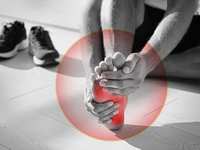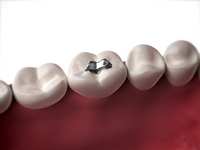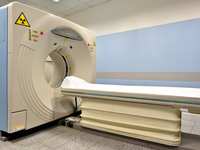- Categories :
- More
How Spinal Decompression Helps with Chronic Back Pain

Struggling with back pain? Worldwide, 619 million people live with low back pain, according to the World Health Organization. Chronic back pain can be life-changing, whether you have a constant dull ache in your upper or lower back or experience radiating pain every time you move. If you haven't found a solution for your pain, spinal decompression therapy could be the effective treatment option you've been searching for.
What Is Spinal Decompression Therapy?
Spinal decompression therapy relieves pressure on spinal discs without surgery. The spinal discs cushion the vertebrae, absorbing shock, and help your spine move smoothly. Wear and tear, poor posture, repetitive stress, aging, or injuries cause the discs to decrease in height, bulge, or herniate (break open). Bulging or herniated discs press on nerves, causing pain, numbness, tingling, and weakness.
Although your problem may start in your spine, back pain may not be your only symptom if you have a disc problem. You might also develop sciatica, a condition that causes leg pain due to compression of the sciatic nerve that extends from the lower back to the legs. Sciatic pain can cause pain in the back, buttocks, hips, and legs. You may also notice tingling, numbness, or weakness. Severe cases of sciatica can even affect bowel or bladder function.
Spinal decompression therapy is a type of traction that gently stretches and decompresses the spine. Decompression helps discs return to their original size and shape and relieves pressure on nerves and tissues.
Although there are many different techniques used in spinal decompression therapy, all of them involve the gentle stretching of the spine. This stretching allows otherwise difficult to reach places within your spine to receive the nutrients they need in order to heal. While you may begin to feel better after one treatment, several treatments are usually needed for optimum results.
Spinal decompression therapy offers an effective way to treat many types of back pain. In a case series published in the Journal of Contemporary Chiropractic in 2025, researchers noted that spinal decompression therapy improved pain, disability, and recovery, and increased average disc height in 13 patients.
Another group of researchers evaluated the effectiveness of spinal decompression therapy in relieving lower back and leg pain caused by herniated discs. Their research appeared in the International Journal of Clinical Practice in 2022. Sixty patients enrolled in the research study were separated into decompression and non-decompression groups. Those who received decompression treatment had less intense lower leg pain than those who didn't receive decompression therapy. Decompression therapy also reduced disc herniation by over 50% in 26.9% of patients.
How Spinal Decompression Could Help You
Spinal decompression can reduce or eliminate your symptoms by:
- Decreasing Pressure on Spinal Nerves. The gentle stretch caused by spinal decompression reduces pressure on the nerves. Once pressure is reduced, pain and inflammation decrease.
- Reducing Bulges and Herniations. Negative pressure created within the spine during spinal decompression therapy retracts bulges and herniations and relieves pressure on nerves. The therapy also helps healing nutrients reach the discs.
- Improving Disc Height and Volume. Degenerative disc disease is a common, age-related back condition. As you age, spinal disks become thinner and lose some of their cushioning ability. Spinal decompression therapy rehydrates the discs, reducing the pain symptoms of degenerative disc disease.
- Boosting Spinal Alignment. Stretching the spine helps it maintain normal alignment. Proper alignment reduces strain on muscles and soft tissues and may improve posture. Your chiropractor may also recommend spinal manipulation, commonly referred to as "adjusting" the spine. Adjustments use quick thrusts and controlled force to realign the vertebrae in your back and neck.
- Loosening Tight Muscles. Your body tightens your muscles as a natural reaction to pain. Unfortunately, muscle tension may lead to even more pain. Reducing pressure on the spine and nerves eases muscle tension, relaxing tight, painful muscles.
Interested in spinal decompression or other chiropractic treatments? Contact our office to schedule an appointment with the chiropractor.
Sources:
World Health Organization: Low Back Pain
https://www.who.int/news-room/fact-sheets/detail/low-back-pain
Journal of Contemporary Chiropractic: Clinical and Imaging Outcomes of Non-Surgical Spinal Decompression for Lumbar Intervertebral Disc Lesions: A Case Series, 3/7/2025
International Journal of Clinical Practice: Effect of Nonsurgical Spinal Decompression on Intensity of Pain and Herniated Disc Volume in Subacute Lumbar Herniated Disc, 9/19/2022
https://pmc.ncbi.nlm.nih.gov/articles/PMC9553669/
WebMD: Spinal Decompression Therapy, 6/5/2023
https://www.webmd.com/back-pain/spinal-decompression-therapy-surgical-nonsurgical
MedlinePlus: Intervertebral Disc Disease
https://medlineplus.gov/genetics/condition/intervertebral-disc-disease/
















